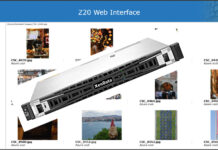Pure Storage has expanded its strategic collaboration with Micron to include Micron G9 QLC NAND for future DirectFlash Module (DFM) products.
Pure’s flash storage arrays use DFMs as solid-state storage devices, with up to four DFMs mounted on a blade carrier. Its latest 150 TB DFM has Micron G8 232-layer QLC NAND qualified for production. Pure also uses Kioxia flash chips in its DFMs.
Generation 9 (G9) Micron flash is claimed to be the world’s fastest TLC (3 bits/cell) NAND by Micron. It fits in an 11.5 mm x 13.5 mm package, with Micron claiming this makes it the smallest high-density NAND available. Pure is using it in QLC (4 bits/cell) format and says the Micron collaboration “enables the high-capacity and energy-efficient solutions that hyperscalers require … for future DirectFlash Module products.” It won a hyperscaler customer deal for its DFM technology in December, with its NAND technology replacing disk drive storage.

Bill Cerreta, GM for Hyperscale at Pure, stated: “Pure Storage’s collaboration with Micron is another example of our significant momentum bringing the benefits of all-flash storage technology to hyperscale environments. With Micron’s advanced NAND technology, Pure Storage can further optimize storage scalability, performance, and energy efficiency for an industry with unparalleled requirements.”
Pure believes its partnership with Micron provides improved performance and lower latency with lower energy consumption and highly scalable systems at a reduced total cost of acquisition and ownership.
The next-generation DFM technology from Pure will provide 300 TB capacity. Micron’s G9 NAND has 19 percent more capacity per chip than 232-layer G8 NAND. A 300 TB DFM built with these chips will need a larger number of chips than a 150 TB DFM built with Micron G8 NAND.
Commercial-off-the-shelf SSDs have reached 122.88 TB in capacity with Phison’s Pascari D205V drive and 122 TB with Solidigm’s D5-P5336 product.
IBM, like Pure, makes its own NAND drives, called FlashCore Modules, and it has a 115 TB maximum effective capacity version – after onboard compression – using 176-layer TLC NAND, available in its fourth-generation FCM range. That’s two generations behind Micron’s G9 flash and we envisage IBM moving to the latest-generation NAND and QLC and at least doubling its maximum capacity later this year.








